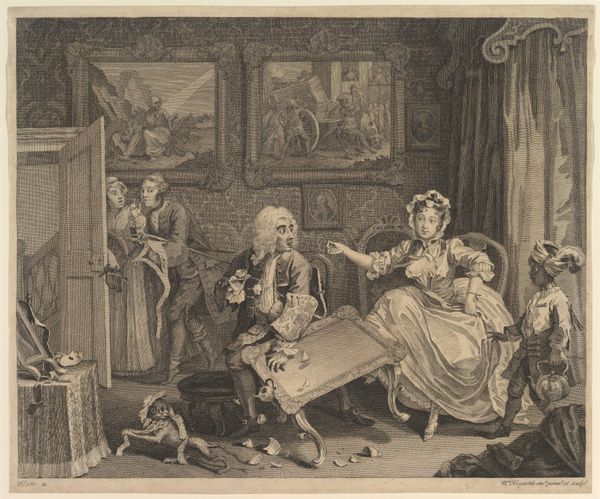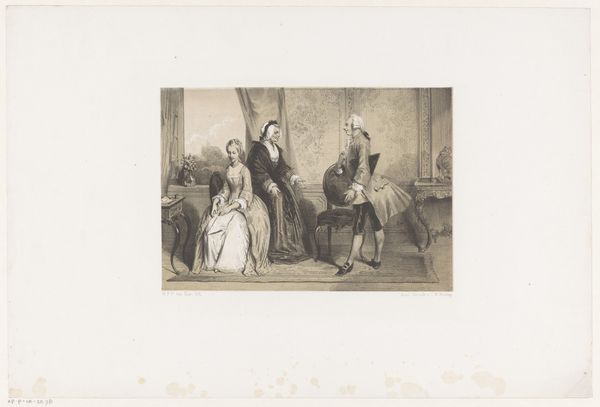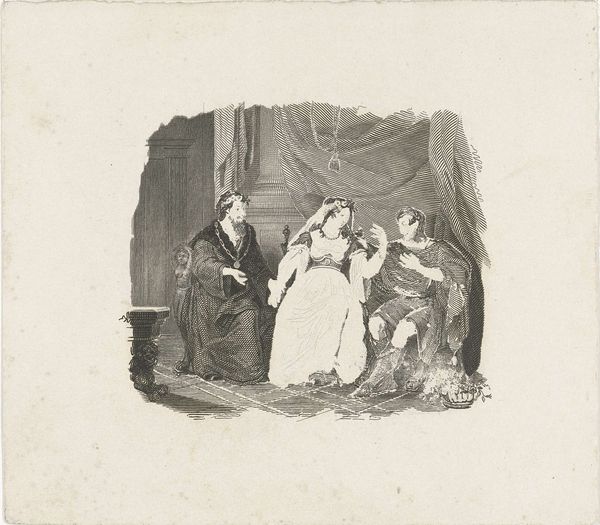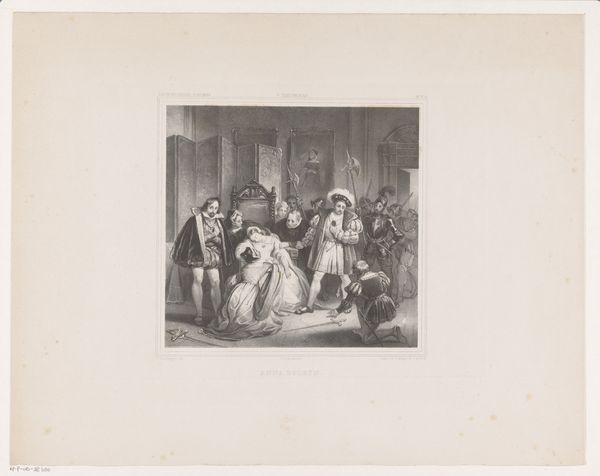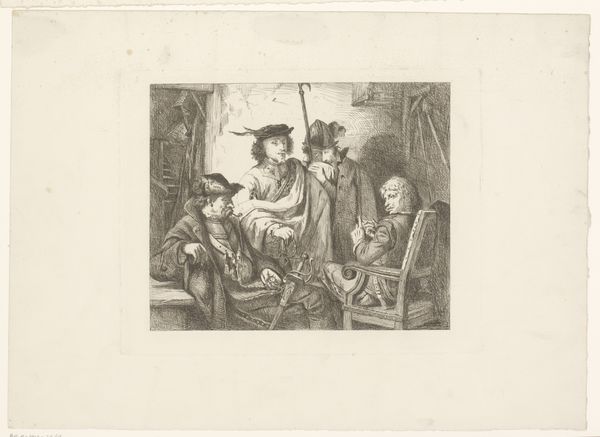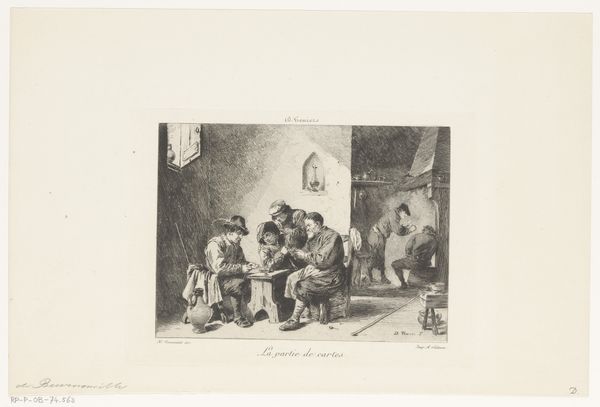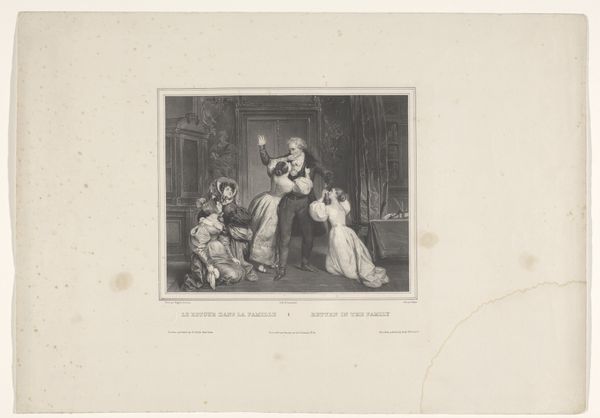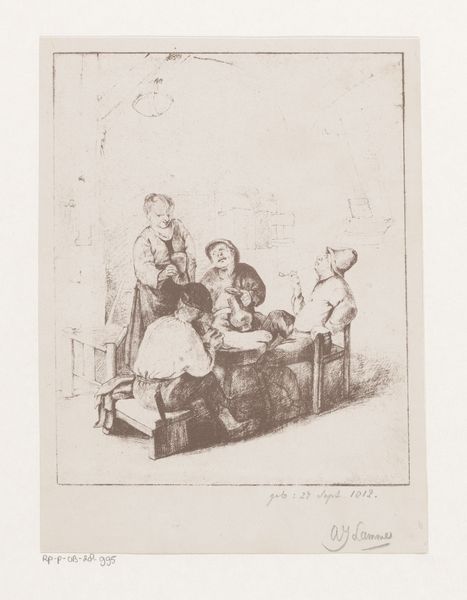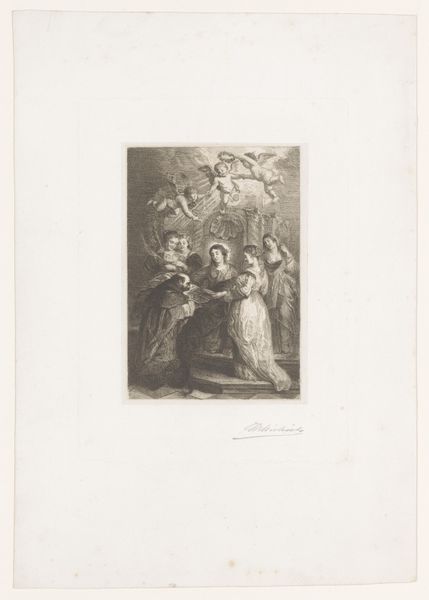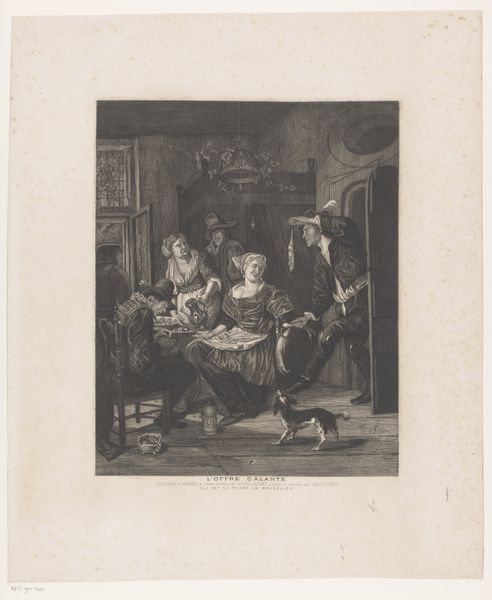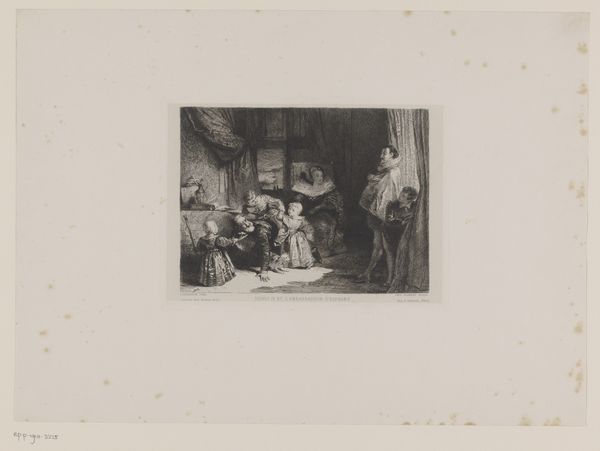
drawing, pencil
#
portrait
#
drawing
#
figuration
#
pencil drawing
#
romanticism
#
pencil
#
genre-painting
Dimensions: height 290 mm, width 420 mm
Copyright: Rijks Museum: Open Domain
Editor: Here we have Johann Georg Schwartze’s “Familiegroep,” made sometime between 1825 and 1874, created with pencil on paper. The texture seems delicate, almost fragile. What strikes me is how the entire family, even the dog, looks rather posed and stiff. What do you make of this work? Curator: This pencil drawing allows us to consider the means of pictorial production during the rise of the middle class. Portraiture had become accessible through industrialization and professionalization, where an artisan's skill and labor now was also tied to a larger economic context. Consider the texture of the paper itself, its industrial origins in the 19th century; Schwartze selected this specific ground, indicative of standardized production for increasingly commercial purposes. Editor: So, even something as simple as paper is reflective of wider economic shifts? Curator: Exactly. It invites questions about the artist's place in the system of making art, compared to that of say, a court painter. The material choices and method of creation are critical. Note how the clothing of the family may suggest ideas of status and economic standing. Are we to consider these details as merely representative? Editor: It's interesting to think of this seemingly simple portrait as a product of a changing art world. What's especially fascinating to me is recognizing how art production is intertwined with materials that reflect an era's economy. Curator: Yes. This drawing provides clues about the transformation of artistic labor into another aspect of industrial, capitalist modes of production. Hopefully this adds a new dimension for interpreting family portraits and genre paintings of the 19th century.
Comments
No comments
Be the first to comment and join the conversation on the ultimate creative platform.

